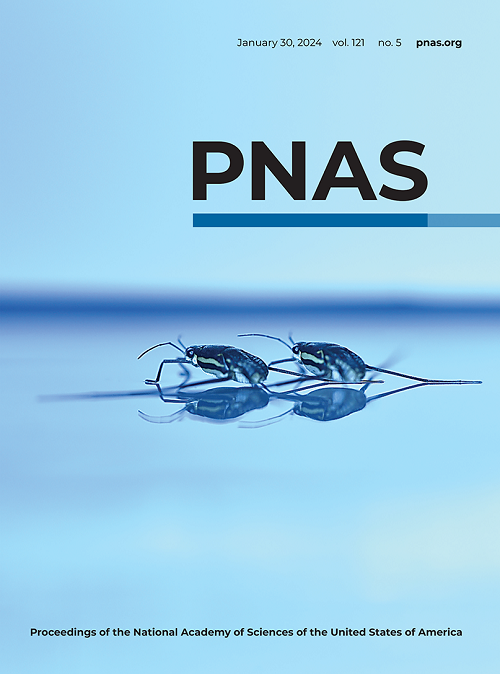Aberrant neuronal hyperactivation causes an age-dependent behavioral decline in Caenorhabditis elegans
IF 9.4
1区 综合性期刊
Q1 MULTIDISCIPLINARY SCIENCES
Proceedings of the National Academy of Sciences of the United States of America
Pub Date : 2024-12-31
DOI:10.1073/pnas.2412391122
引用次数: 0
Abstract
Age-dependent sensory impairment, memory loss, and cognitive decline are generally attributed to neuron loss, synaptic dysfunction, and decreased neuronal activities over time. Concurrently, increased neuronal activity is reported in humans and other organisms during aging. However, it is unclear whether neuronal hyperactivity is the cause of cognitive impairment or a compensatory mechanism of circuit dysfunction. The roundworm异常神经元过度激活导致秀丽隐杆线虫的年龄依赖性行为下降
年龄依赖性感觉障碍、记忆丧失和认知能力下降通常归因于神经元丧失、突触功能障碍和神经元活动随着时间的推移而减少。与此同时,据报道,人类和其他生物体在衰老过程中神经元活动增加。然而,目前尚不清楚神经元过度活跃是认知障碍的原因还是电路功能障碍的代偿机制。秀丽隐杆线虫(Caenorhabditis elegans)在一种被称为热趋向性的联想学习行为中表现出年龄依赖性下降,在这种行为中,它对温度梯度的偏好取决于其培养过程中的食物供应。细胞消融和钙显像显示老龄动物由AFD热感觉神经元和AIY中间神经元组成的主要热感觉回路相对完整。另一方面,消融AWC感觉神经元或AIA中间神经元均可改善年龄依赖性热致性下降。老年动物的两个神经元都表现出自发和随机的高活性,AWC和AIA之间通过神经递质和神经肽的相互交流增强了这种活性。我们的研究结果表明,AWC和AIA的过度活跃介导了老年动物的耐热性下降。此外,饮食调节可以通过抑制神经元的过度活跃来改善年龄依赖性的热致性下降。我们认为,异常增强而非减弱的神经元活动会损害老年动物的行为。
本文章由计算机程序翻译,如有差异,请以英文原文为准。
求助全文
约1分钟内获得全文
求助全文
来源期刊
CiteScore
19.00
自引率
0.90%
发文量
3575
审稿时长
2.5 months
期刊介绍:
The Proceedings of the National Academy of Sciences (PNAS), a peer-reviewed journal of the National Academy of Sciences (NAS), serves as an authoritative source for high-impact, original research across the biological, physical, and social sciences. With a global scope, the journal welcomes submissions from researchers worldwide, making it an inclusive platform for advancing scientific knowledge.

 求助内容:
求助内容: 应助结果提醒方式:
应助结果提醒方式:


